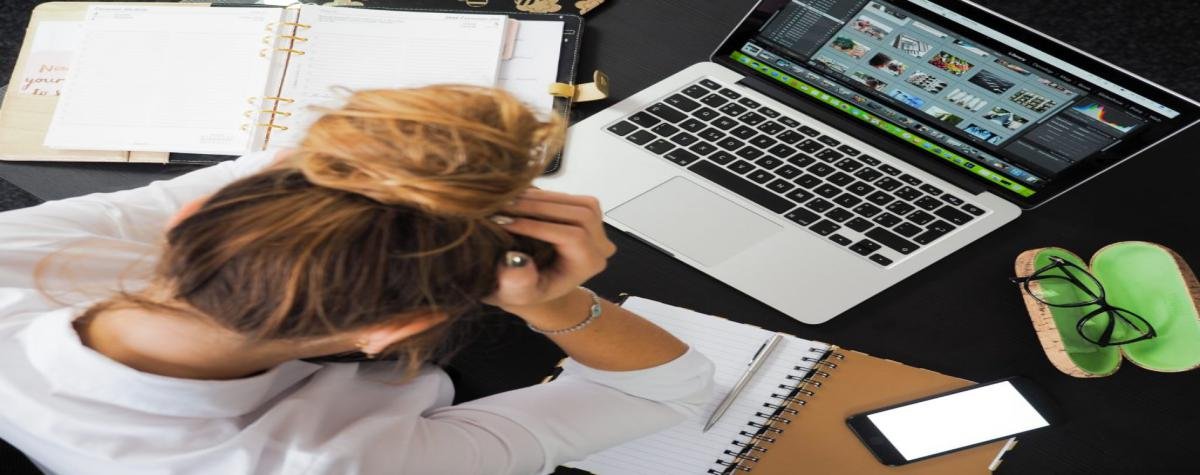Even before the COVID-19 pandemic hit us, around 5.2 million French workers were working partly or entirely from home. That number has sharply increased since the French state demanded that non-essential workers work as much as possible from home.
If you are one of these people, you may have noticed new aches and pains that you have never experienced before in the office.
Many companies follow the ISO 9241 standard in the layout of their workstations by providing furniture and ergonomic accessories. However, most of us just don’t have the space to accommodate ergonomic office furniture in the home.
No matter where we settle in for the day, there’s a good chance we’re not in a healthy state. And if you’re experiencing physical strain on your back, the bad news is that you may already be on your way to a musculoskeletal disorder that can cause severe pain ranging from minor to severe.
A worrying number of 2 out of 3 employees suffer or will suffer from back pain at some point in their life causing nearly 11.5 million workdays lost each year. In fact, low back pain in France represents 7% of occupational illnesses and 20% of work accidents, for which the average duration of sick leave is two months.
So what can we do?
Finding a cure for back pain usually starts with determining the root cause, whether it’s bad posture you need to correct or an injury you need to treat. Changes to the way you work and your lifestyle can greatly reduce certain tensions that worsen your pain.
Here are some tips that anyone can follow to reduce most back pain.
A healthy lifestyle
Start by eating a healthy diet. Excess weight combined with the regular pressure of work activities can make your back pain worse. Also, make sure you get enough vitamin, mainly vitamin D as well as calcium. These nutrients help prevent osteoporosis, a disease that weakens bones and can lead to many bone fractures and back pain over the long term.
Of course, aging can be an aggravating factor. But while you can’t control your age, you can still focus on maintaining a healthy lifestyle.
Watch your sitting posture
Your sitting posture greatly affects the condition of your back throughout the day. Therefore, to promote good posture, choose an office chair that supports the natural curve of your back. Your feet should also rest firmly on the ground. Consider getting a footrest to elevate your feet or even a phone book, for extra support.
Make sure you can sit so that some of your weight is supported by the back of the chair. Sit close enough to your desk to easily and comfortably reach your mouse and keyboard. If the chair does not provide good lumbar support, use a rolled up towel or cushion to place behind the lower back.
Don’t lean forward like a turtle. Sit so that your head is straight as if to look straight ahead. Ideally, your head and neck should be completely above shoulder level.
Avoid crossing your legs. This position can cause your muscles to stretch too much, which can lead to a twisting of the spine. And, adjust your armrests so that your arms keep a 90-degree angle and your shoulders stay relaxed.
Keep your monitor about an arm’s length and slightly below eye level. This will encourage you to sit up instead of leaning forward and causing strain on your neck.
If your bed is the only place where you can work in peace, then place a pillow behind your back against the headboard. Next, lay your laptop on a cushion in your lap. Or better yet, get a coffee table so that the computer can pass on your legs. This will allow you to type at a comfortable height without stressing the neck.
Optimize your phone call taking
Avoid tying your phone between your head and shoulder to free your hands when speaking. This is the best way to induce tension in the shoulders and neck. Instead, prefer an alternative like a headset or earphones if you need to take notes or if your conversation lasts more than five minutes.
The ergonomics of your keyboard and mouse
Use a Bluetooth keyboard and mouse if your laptop has been elevated to be level with your screen. Make sure you can use the mouse and keyboard with your forearms and that your upper arms are close to your body. This will avoid compressing the nerves in the hand that leave the neck and cross the shoulder.
Listening to your body: get up and move
Even with good posture, sitting at your desk for an extended period of time can weaken your back muscles and cause discomfort. Change your position often, gently stretch your muscles to relieve tension, and stand up to walk at least once an hour, or even better.
Take short breaks, for example, to have a drink of water or to go to the bathroom. Spread all the activities that get you out of your seat over your day. This allows you to switch between sitting time and tasks that allow you to get up and move.
Listen to your body to determine when to get up. If you notice contractions in your back or feel tense, take your next break a little earlier or move on to a task that allows you to move.













